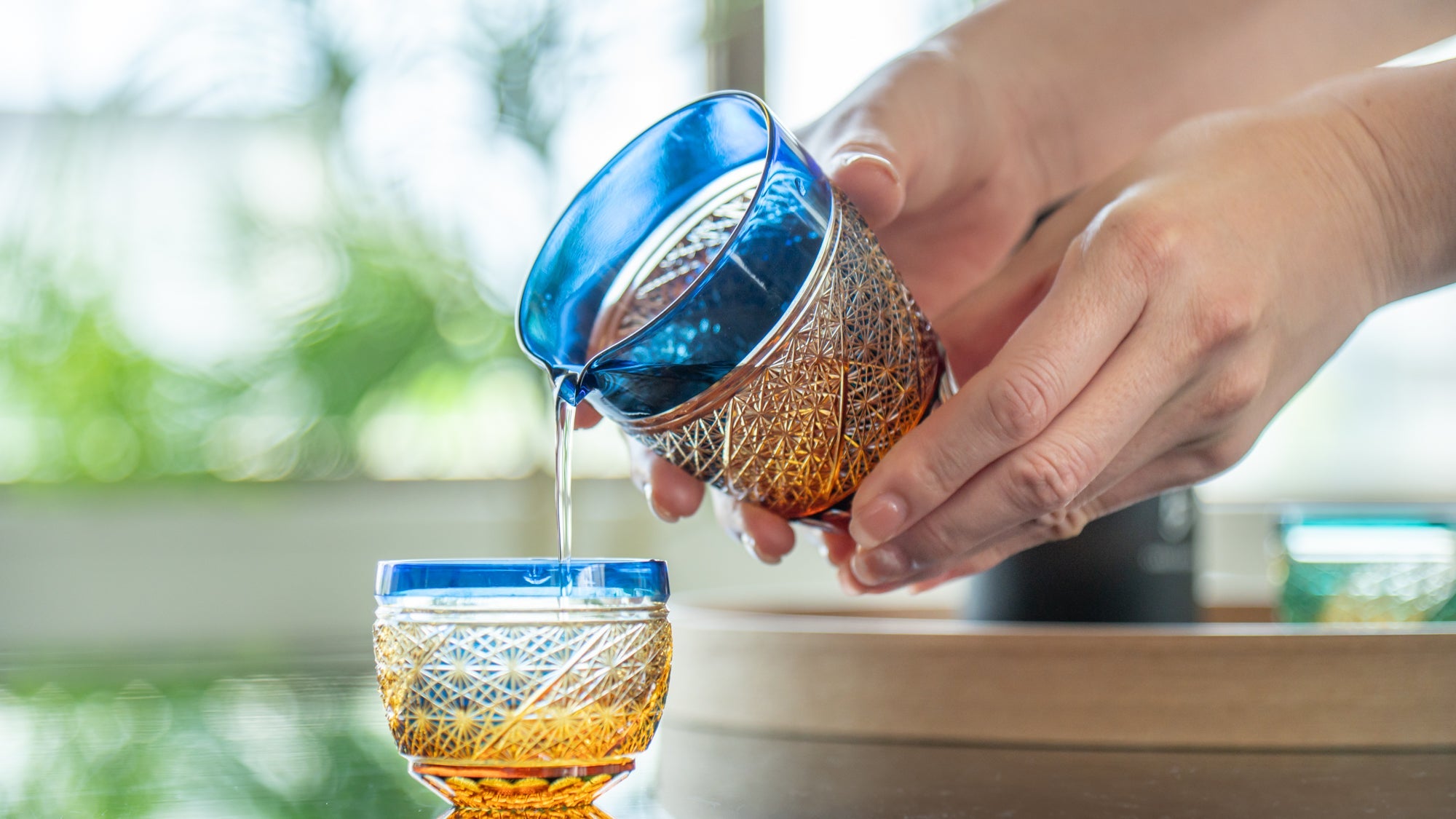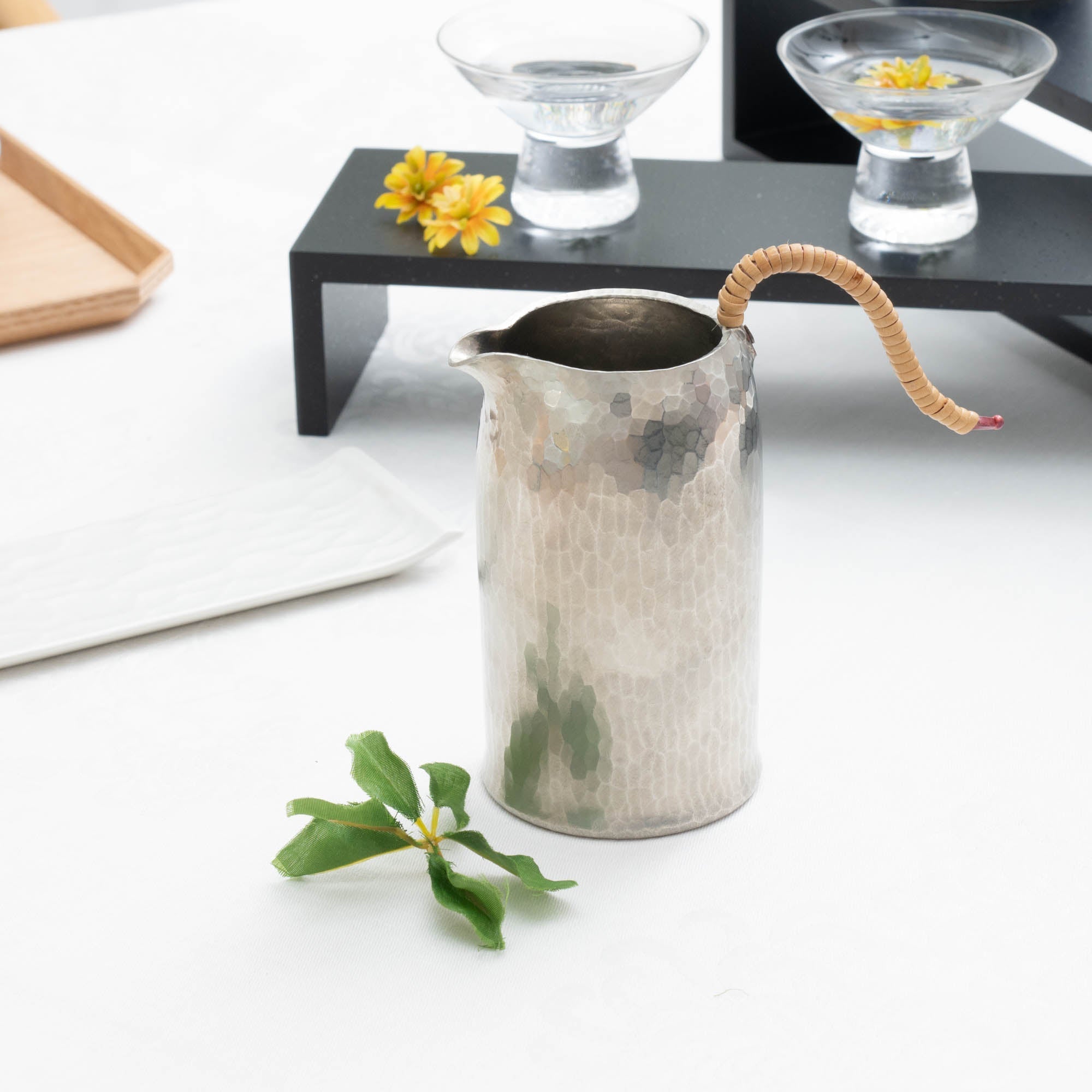

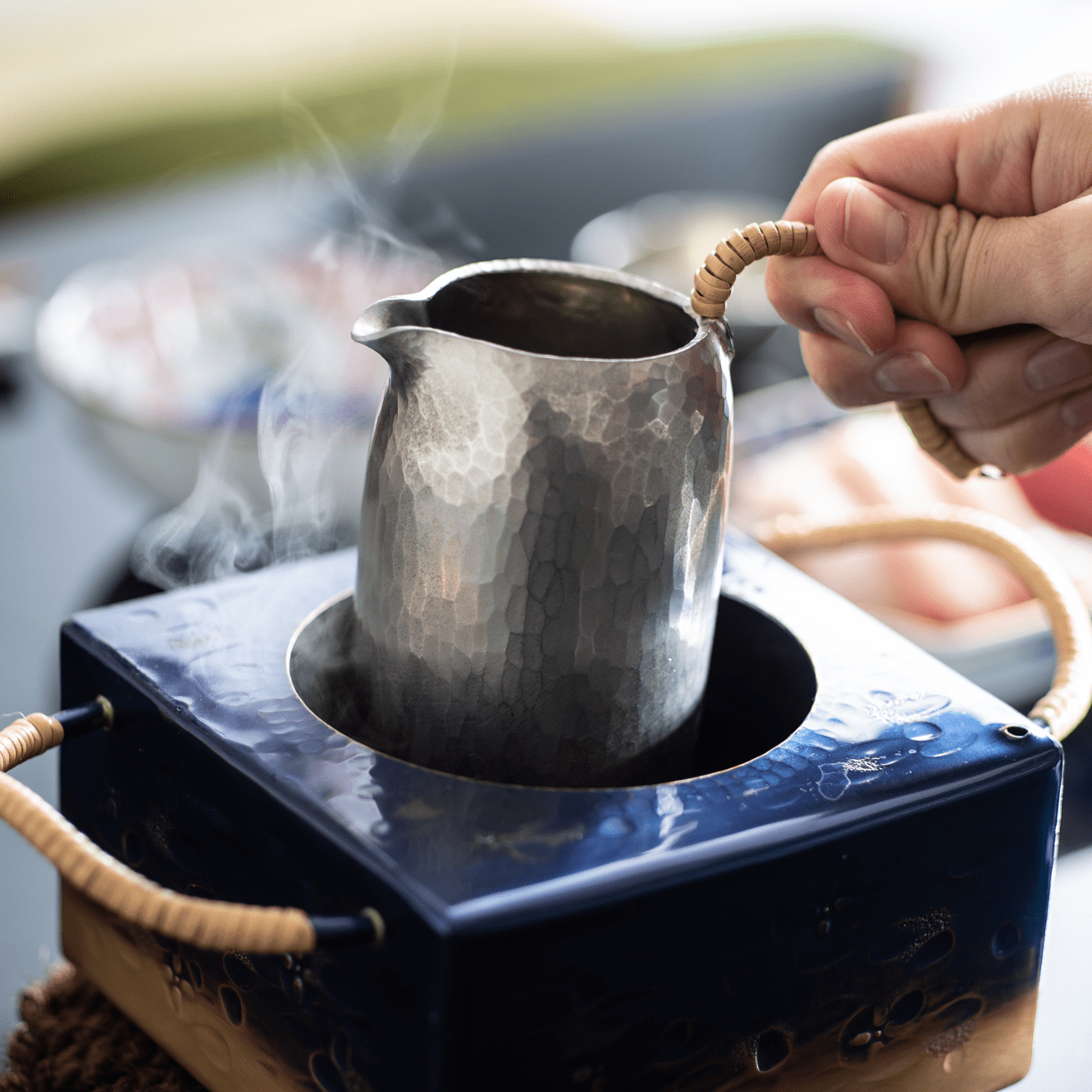
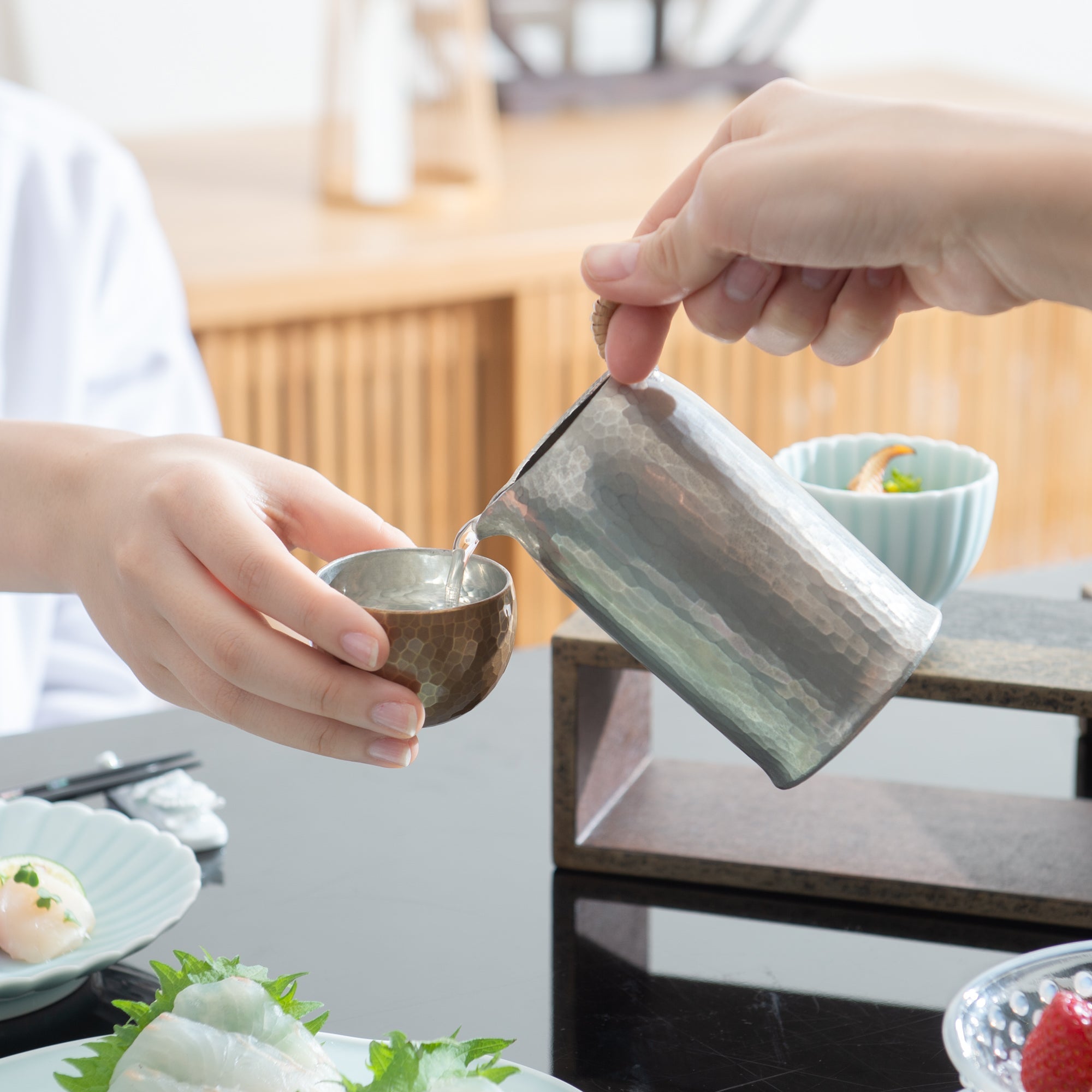
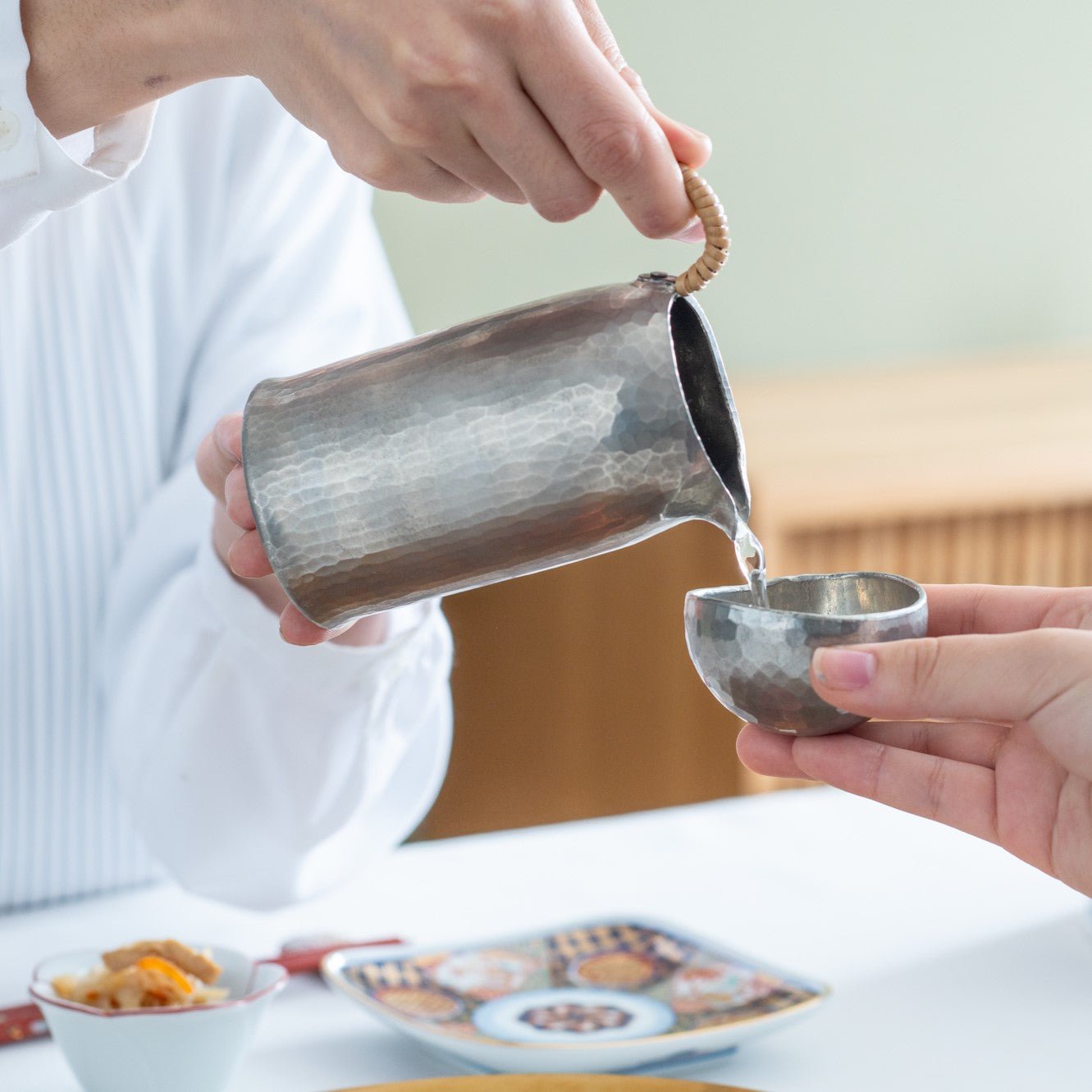
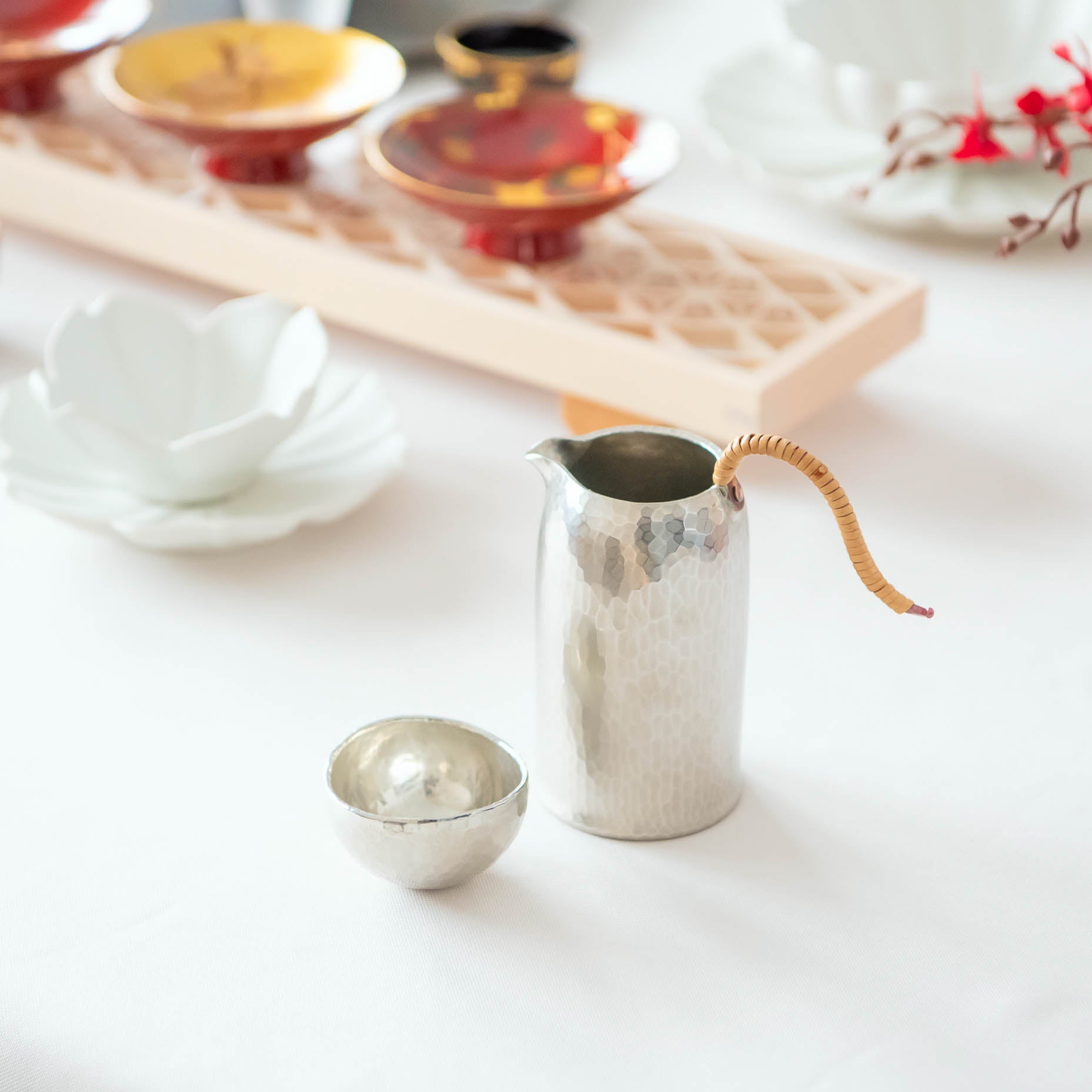
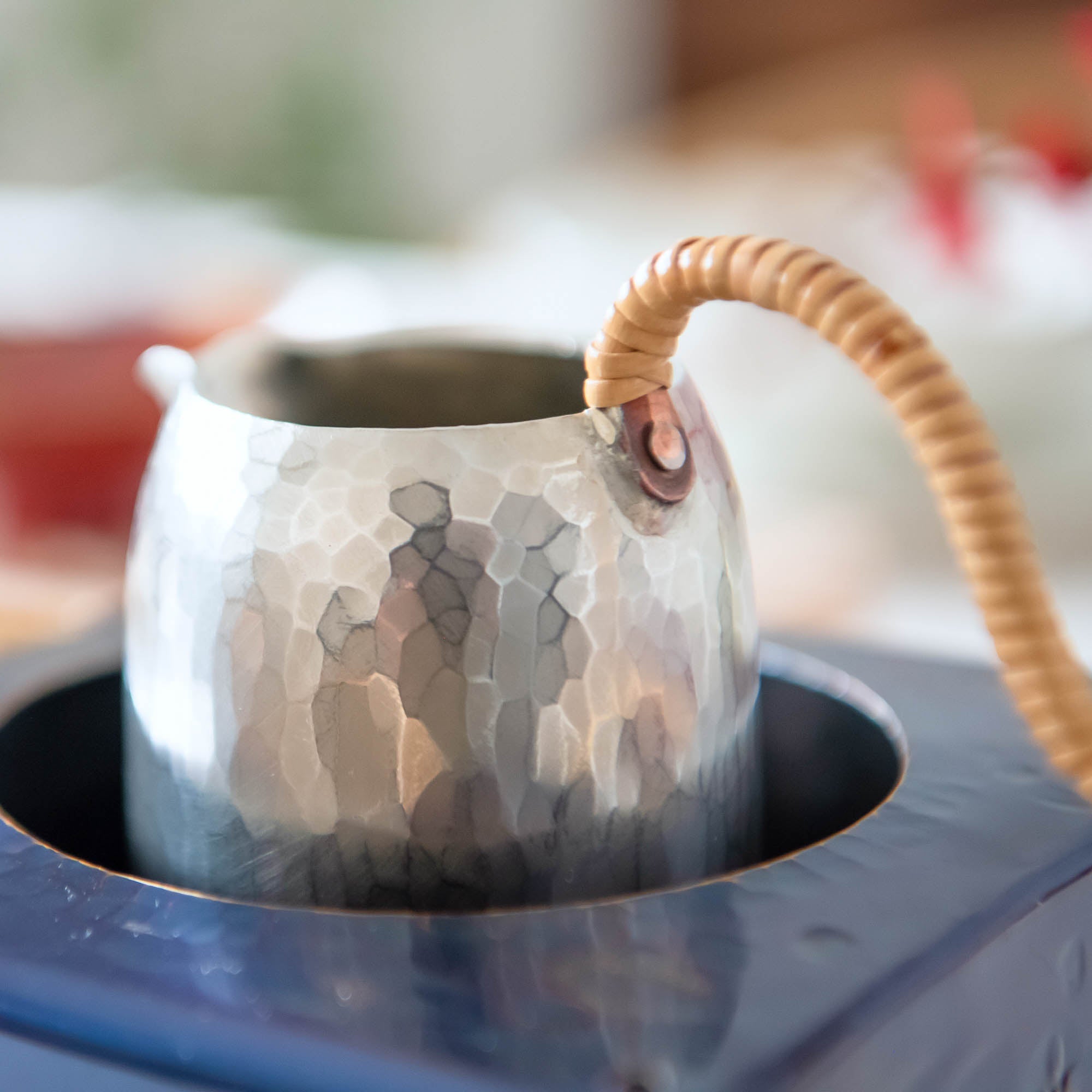
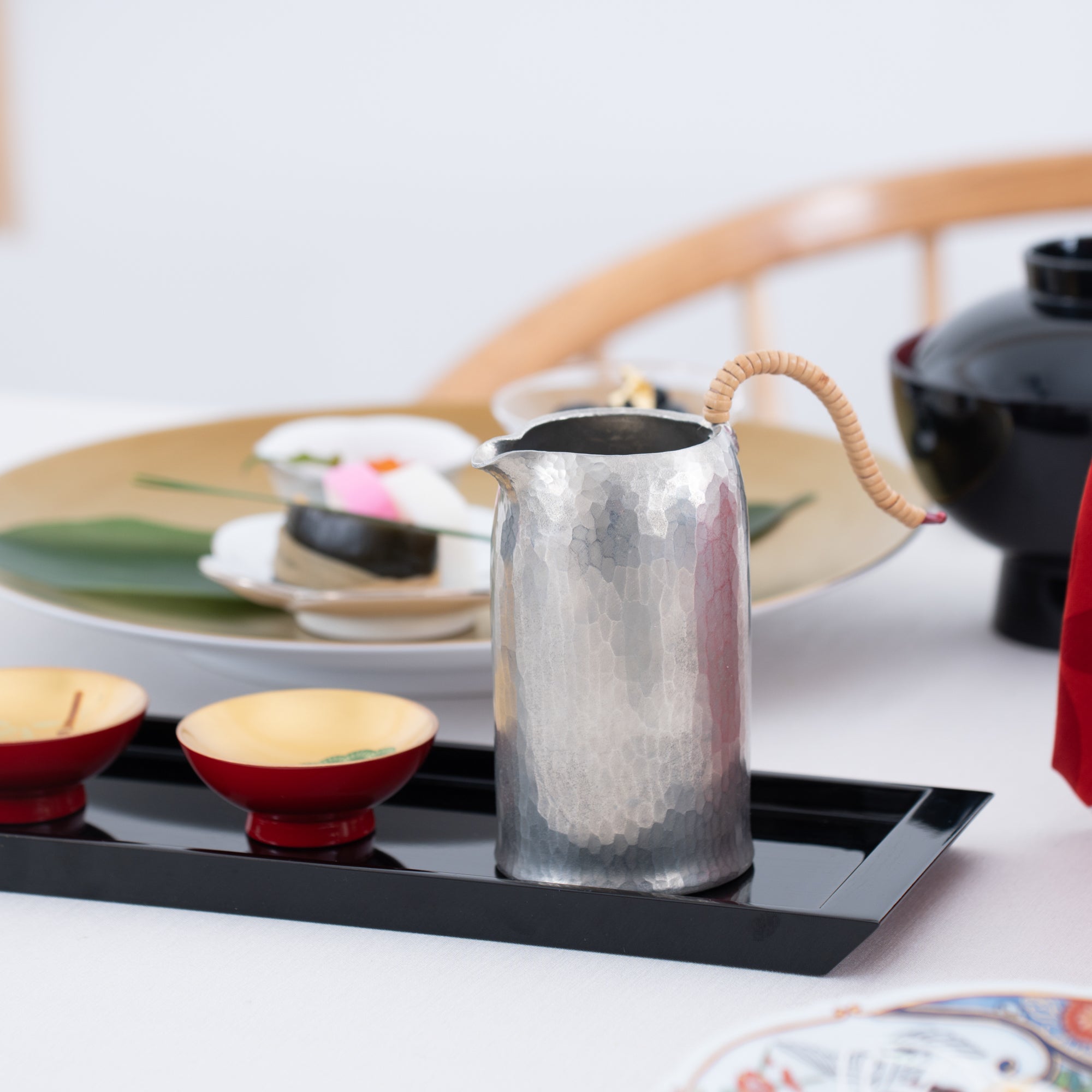

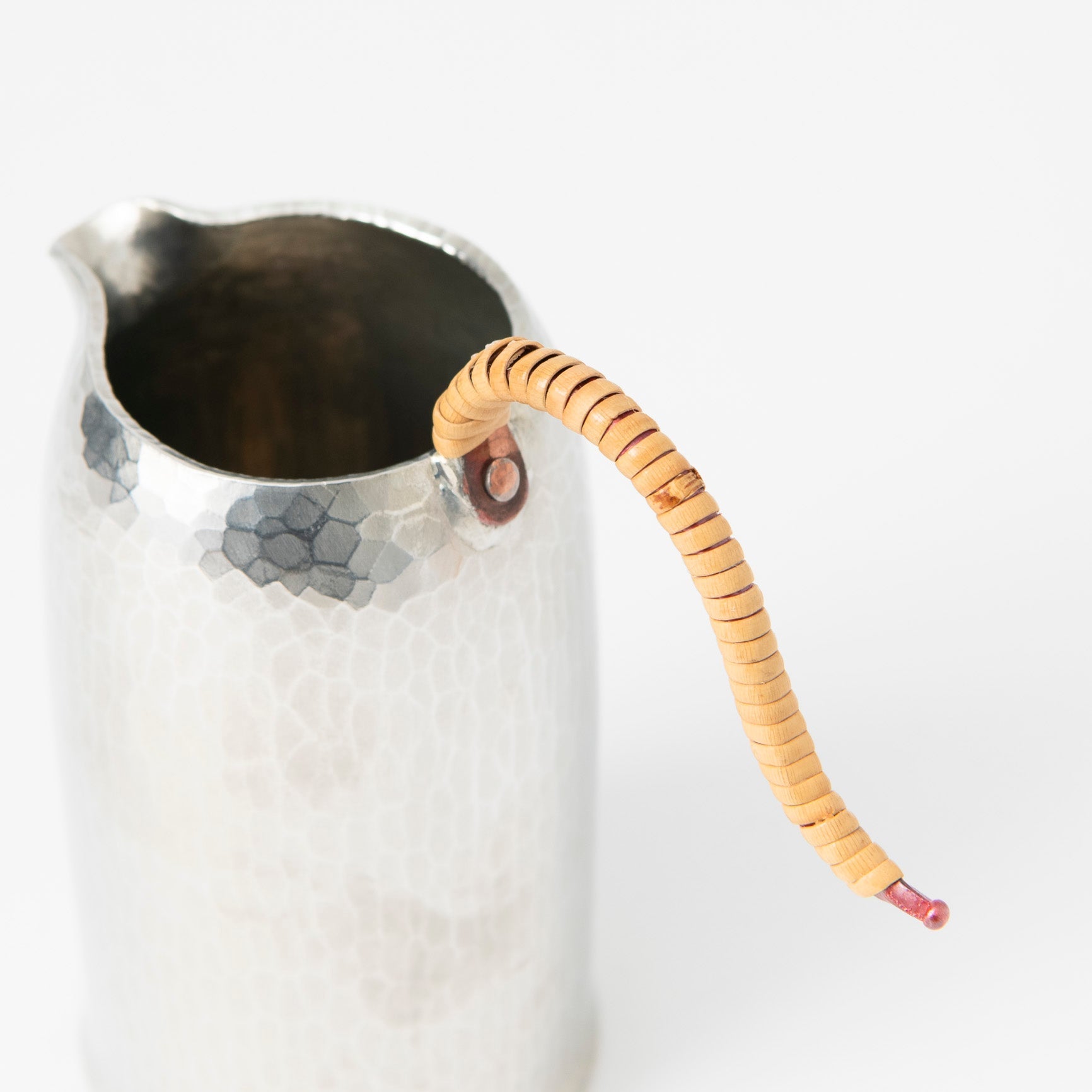
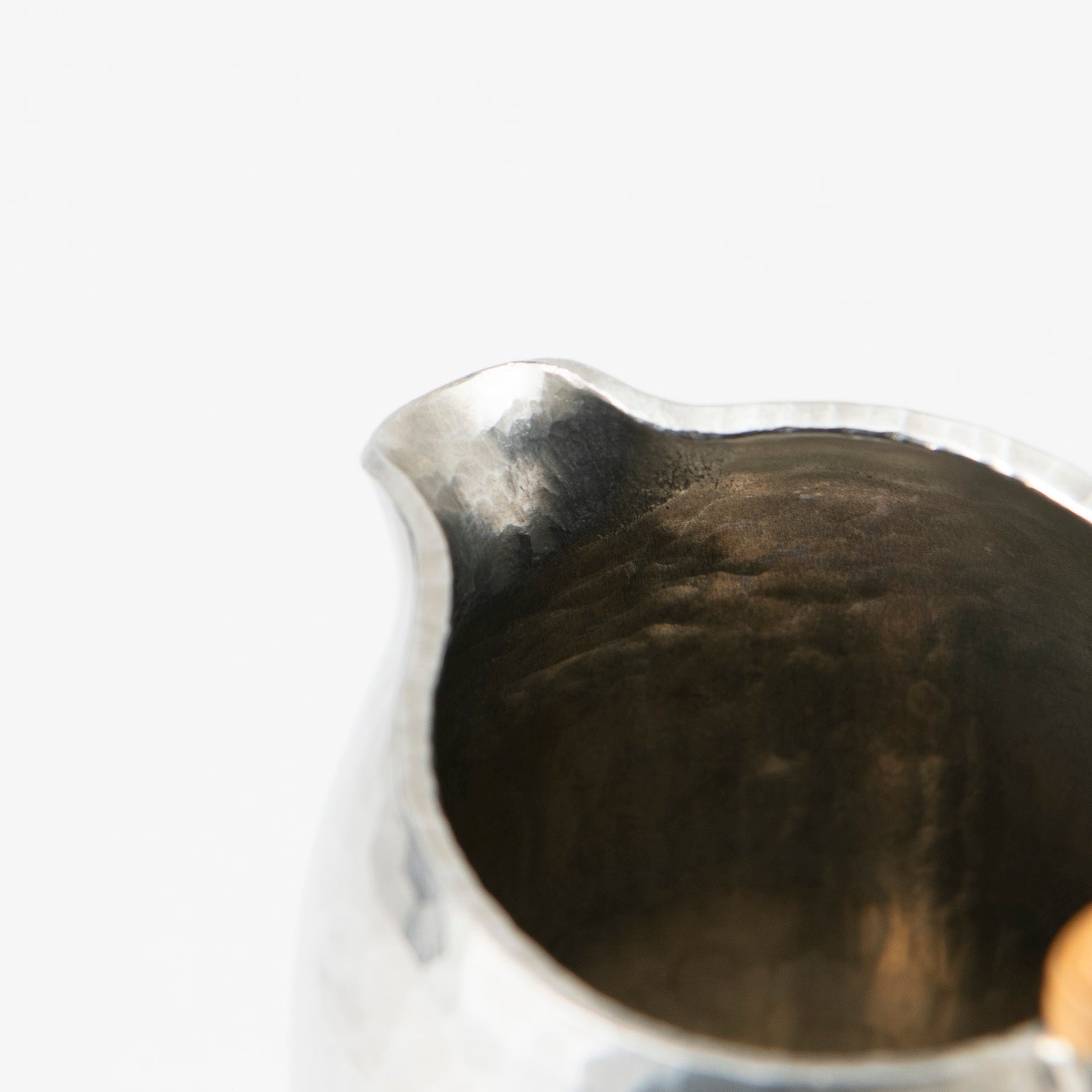
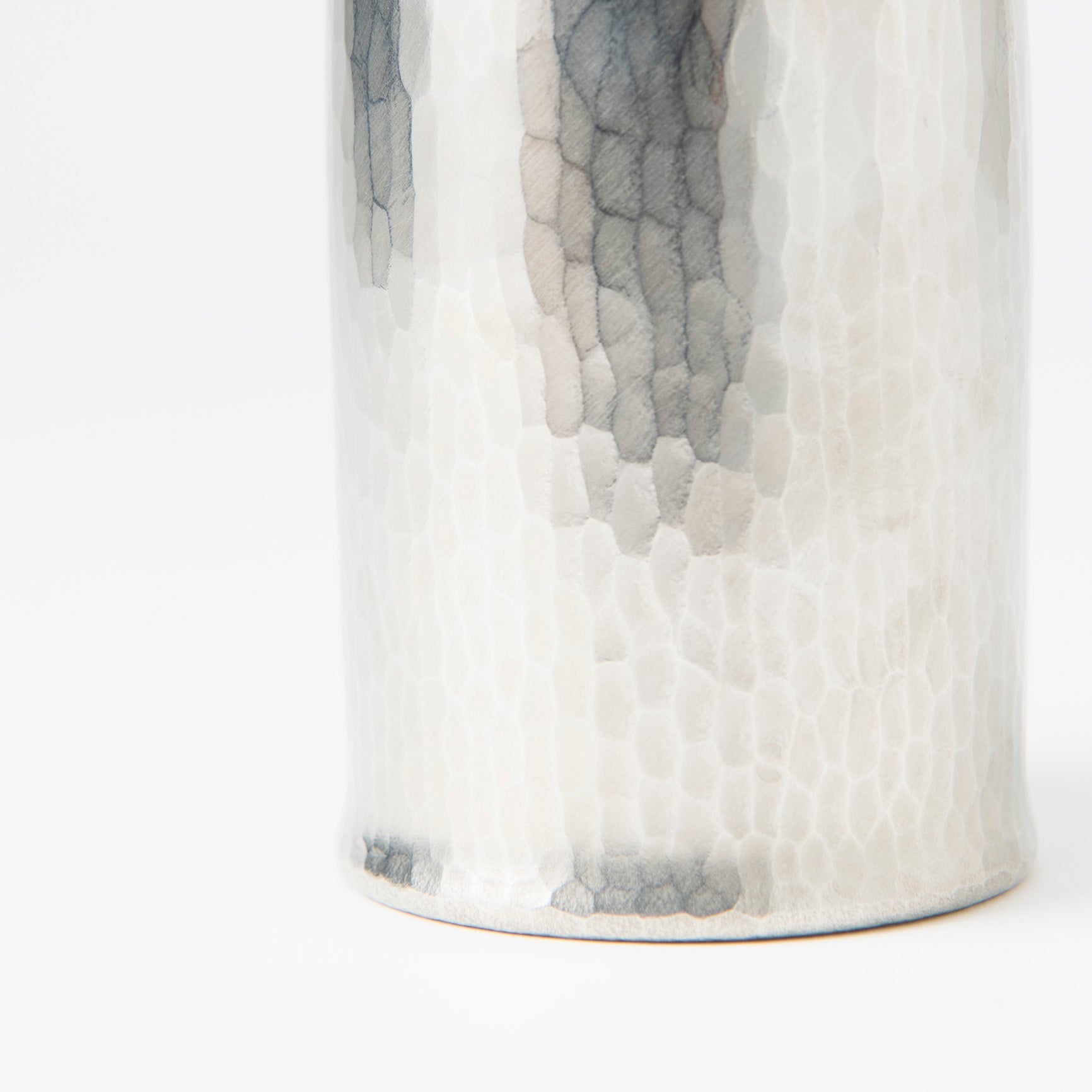
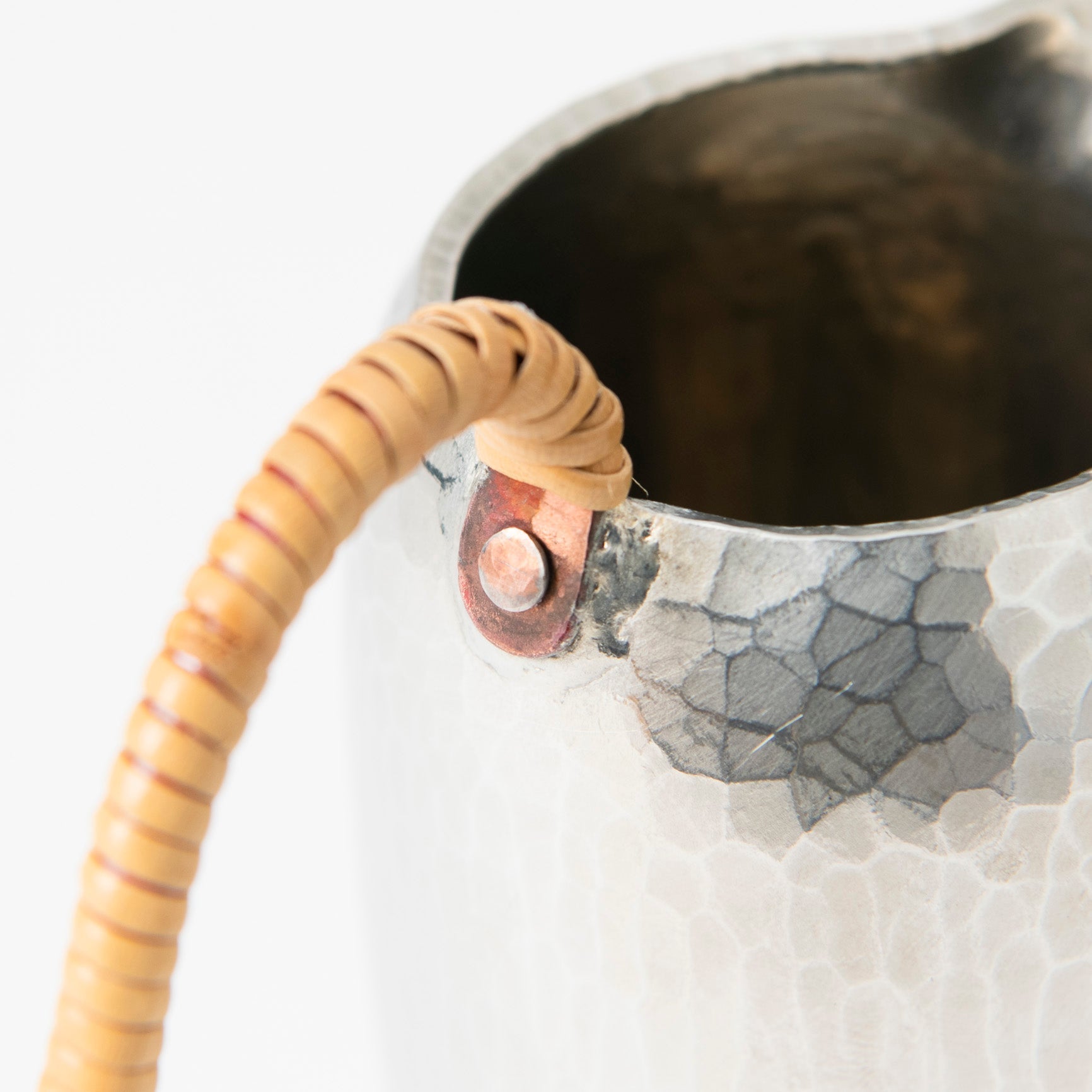
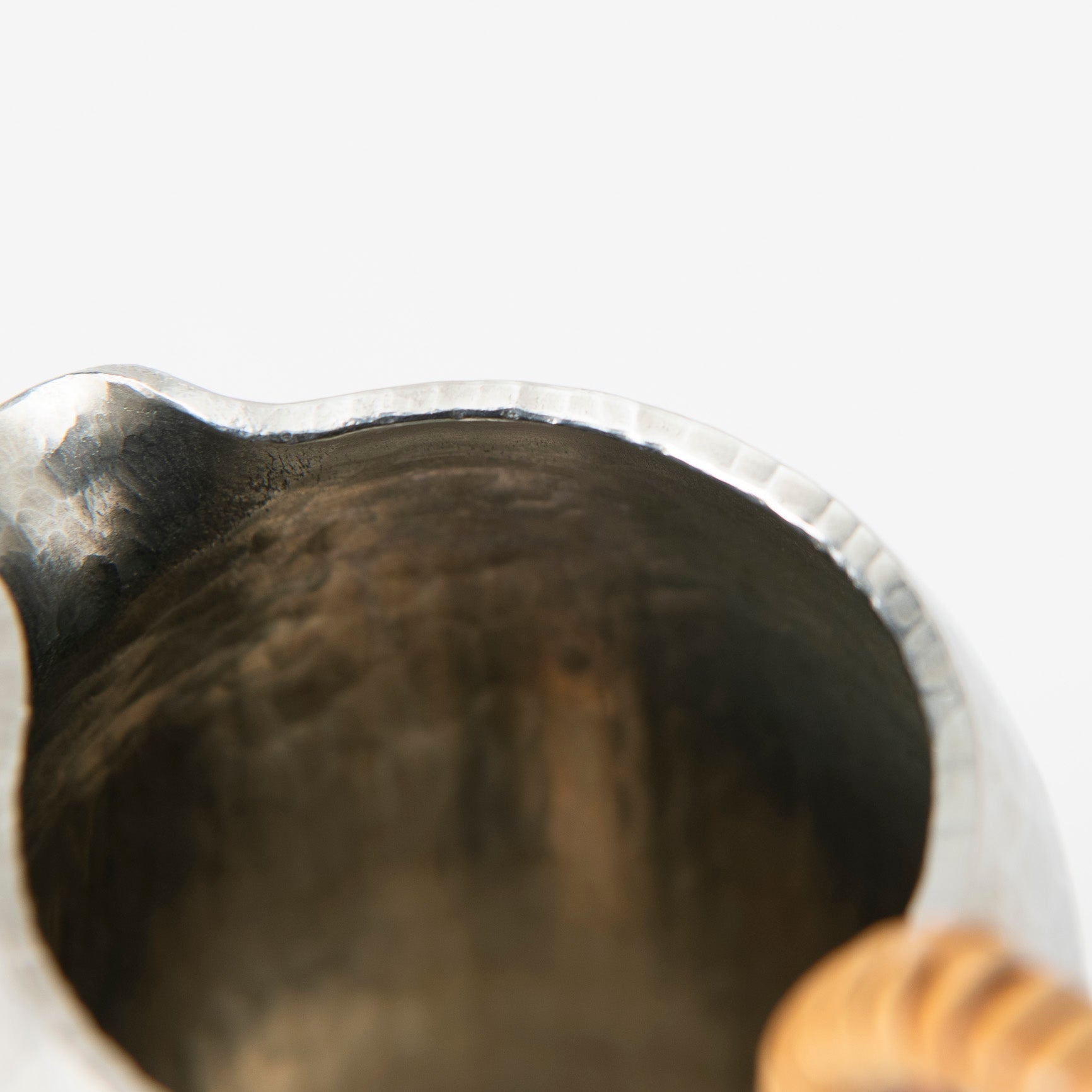
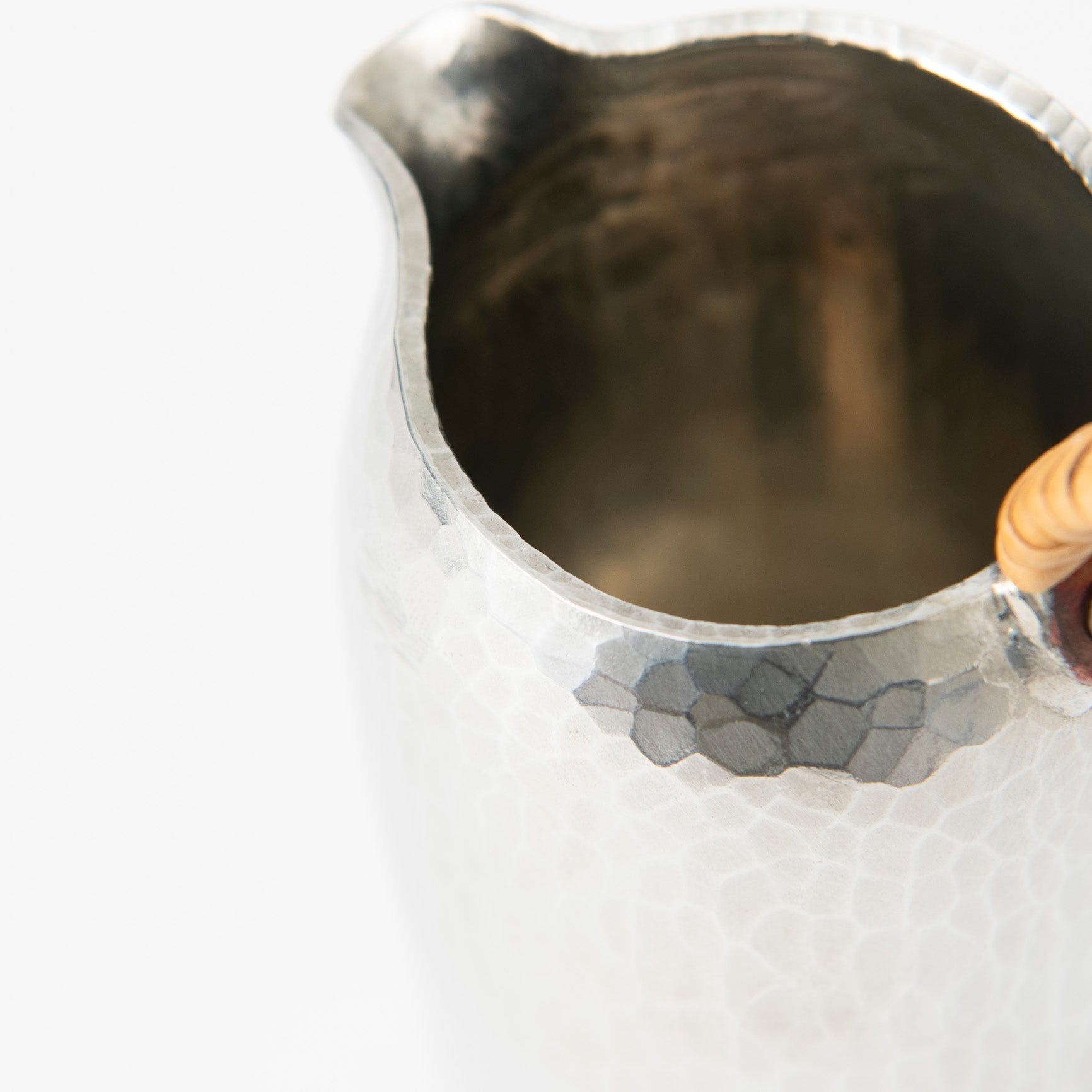
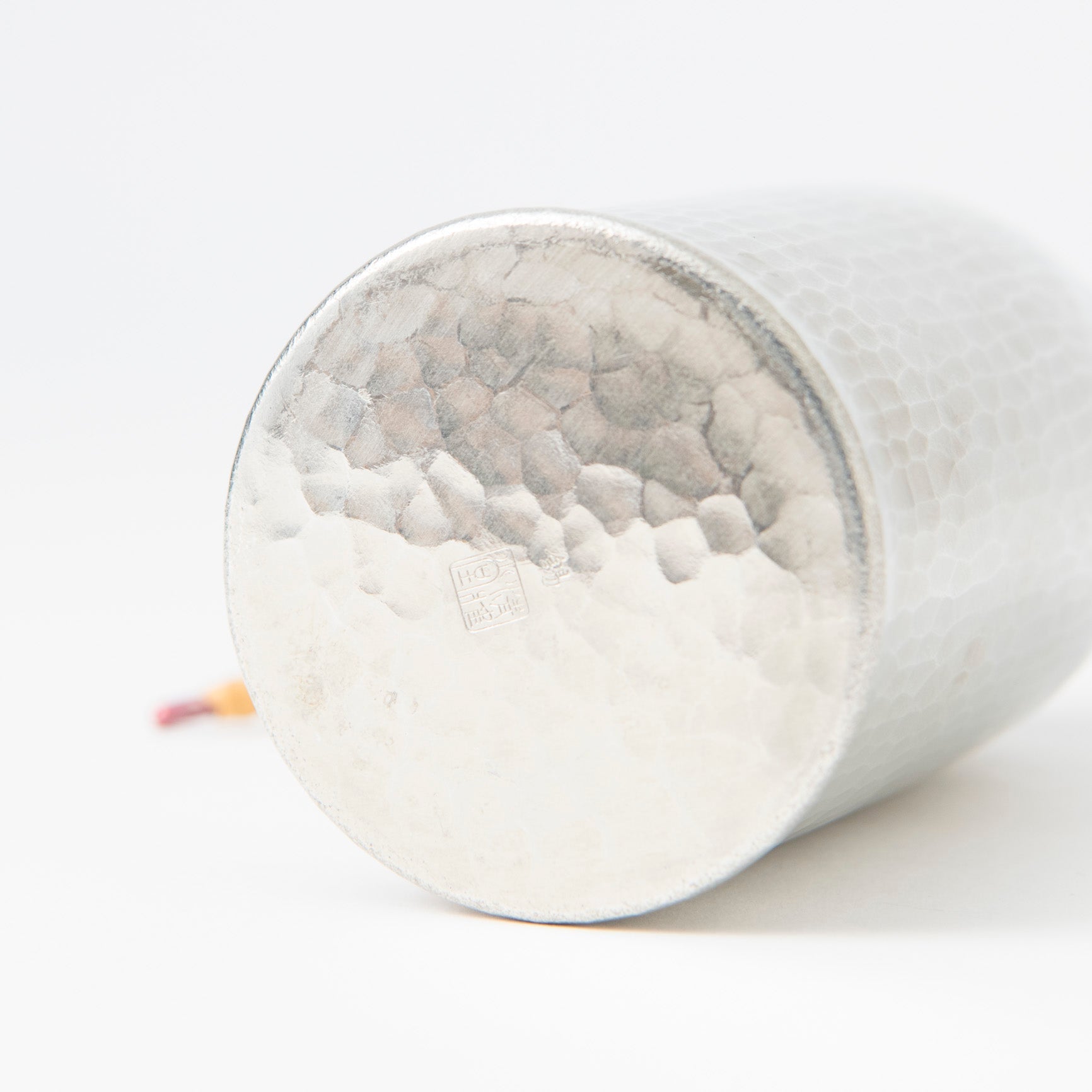
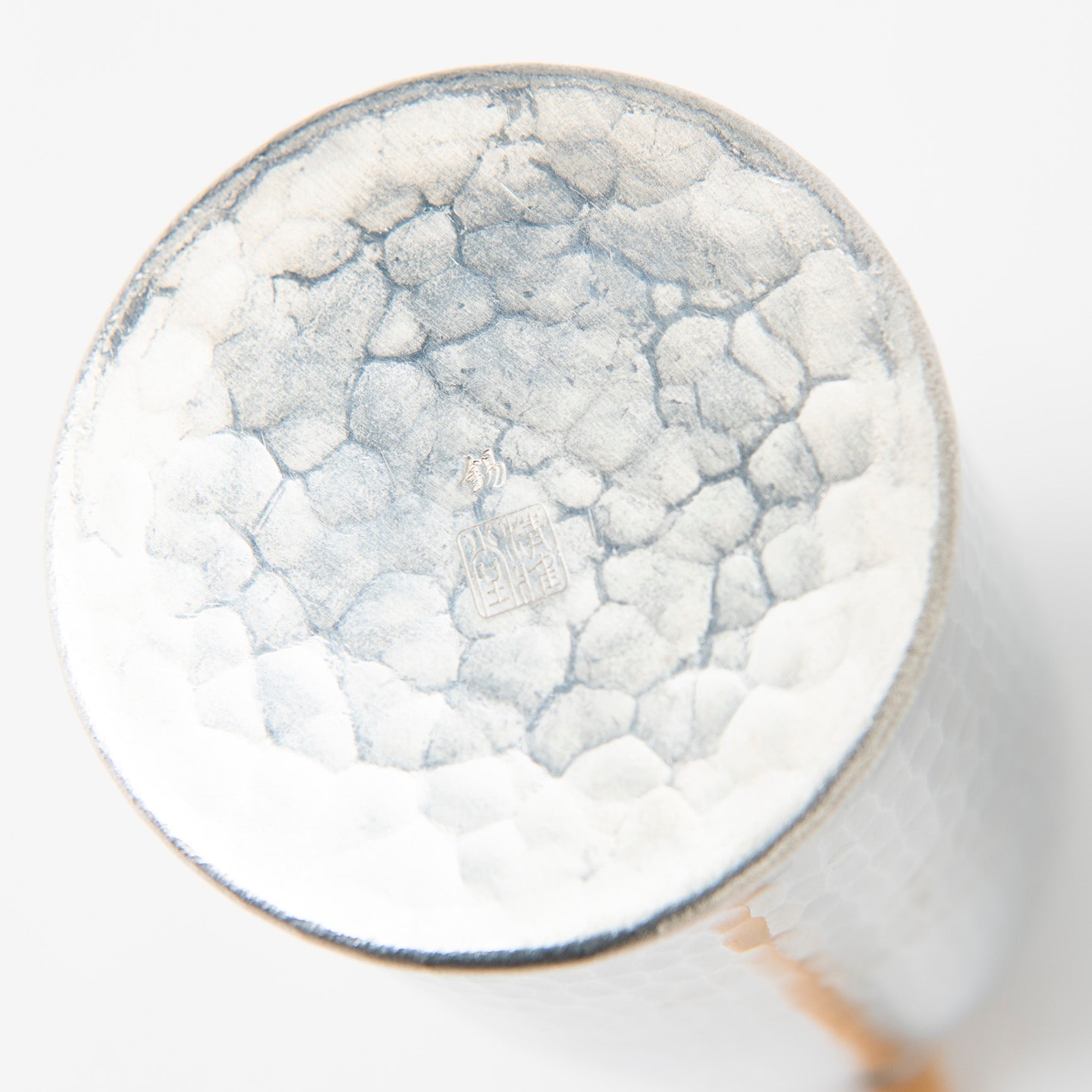
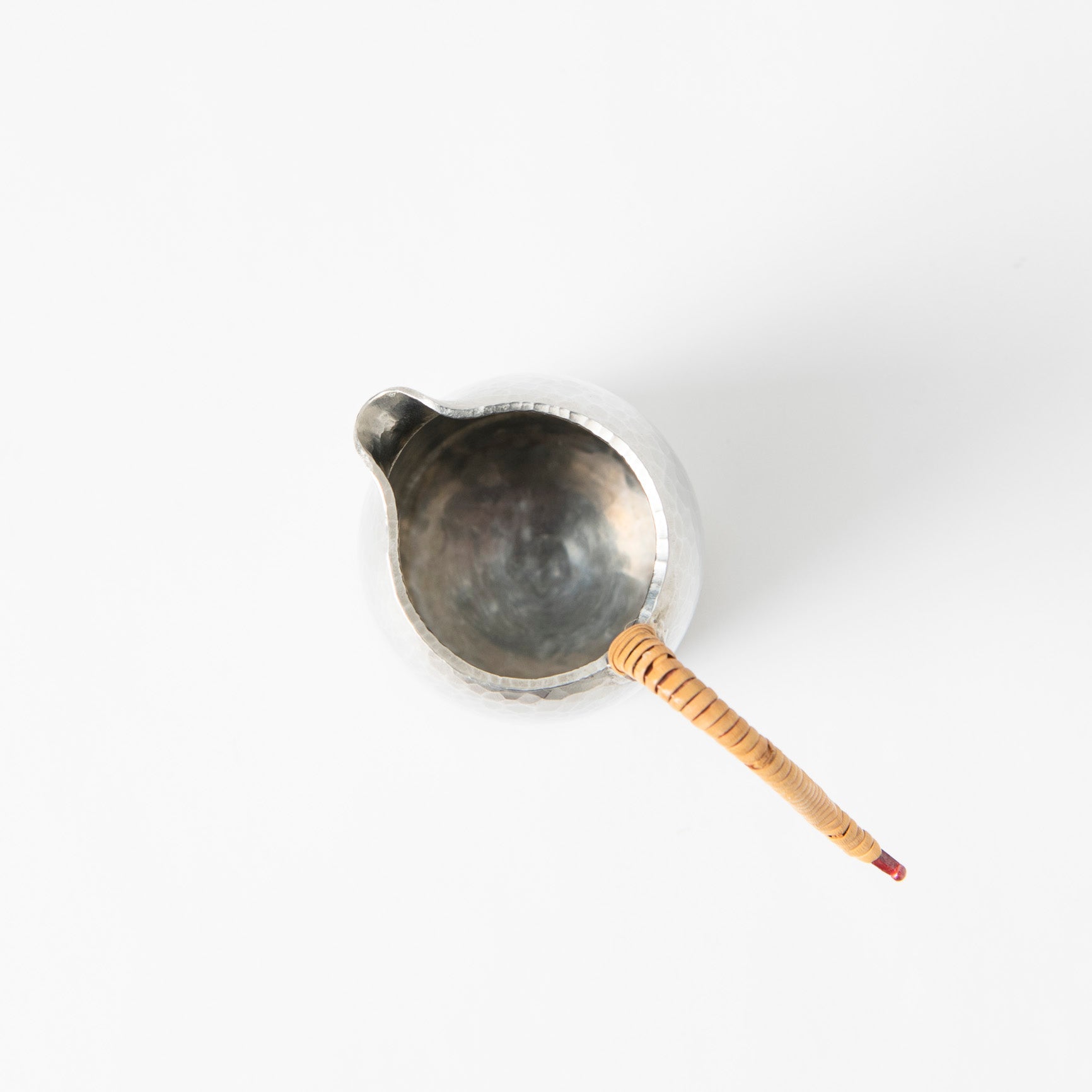
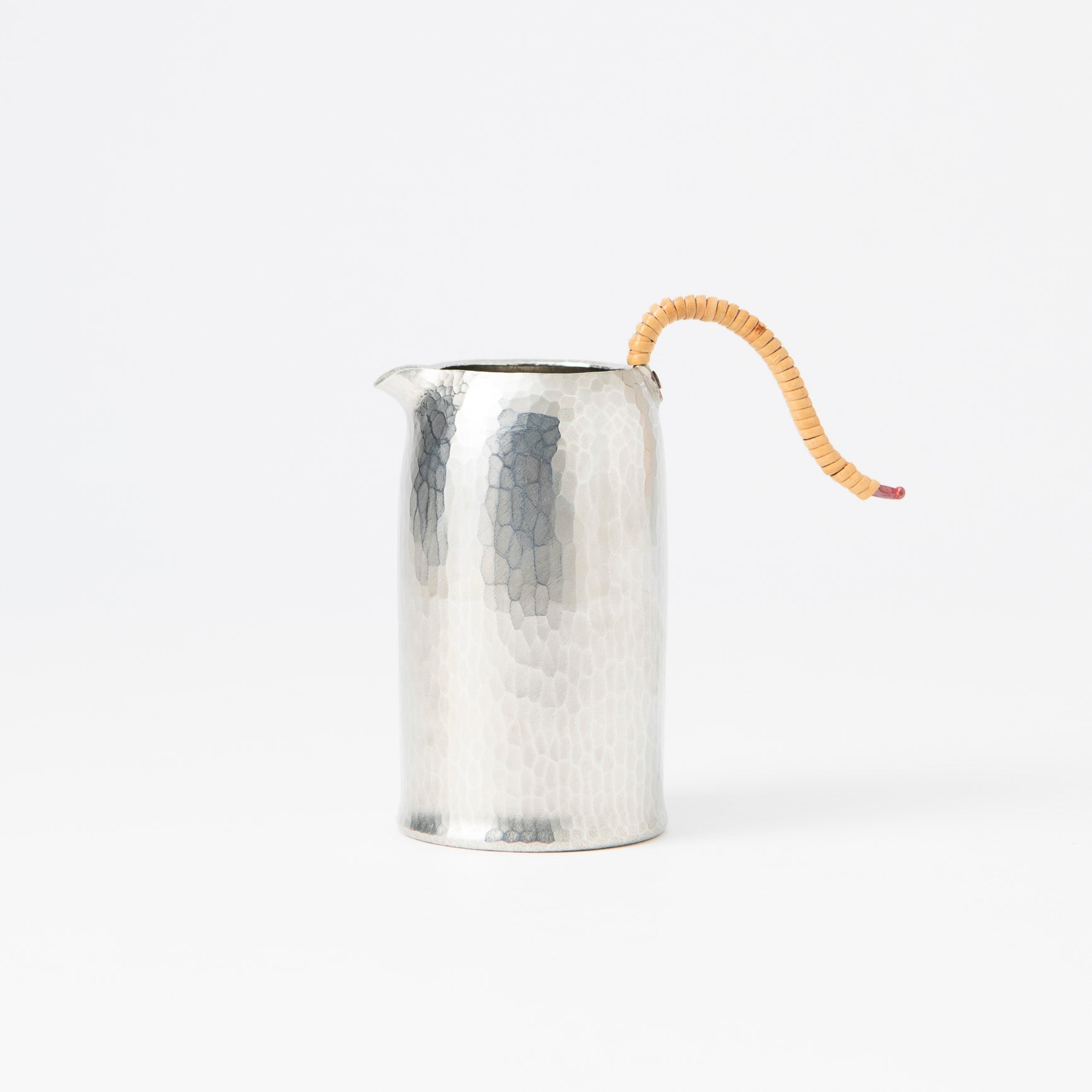
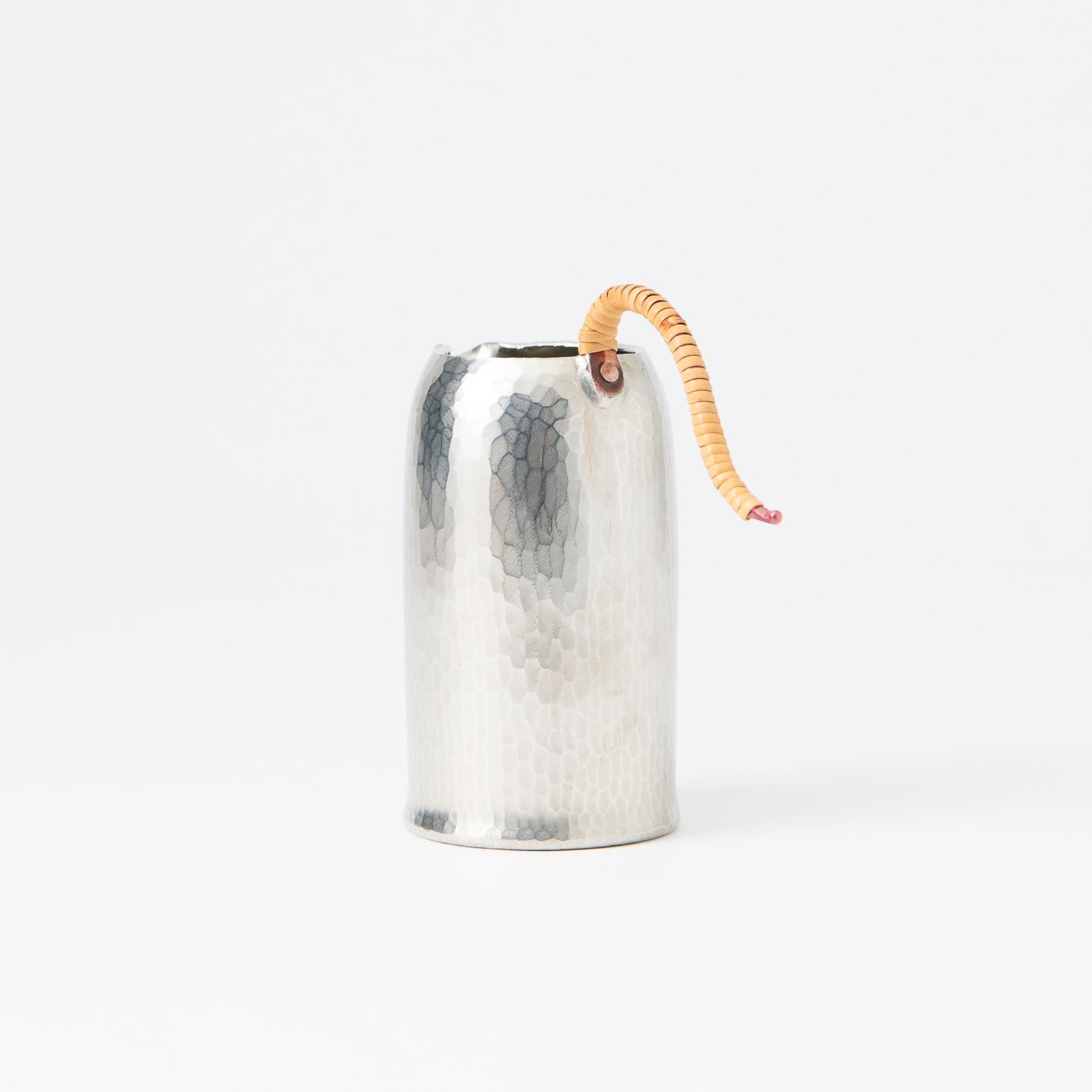
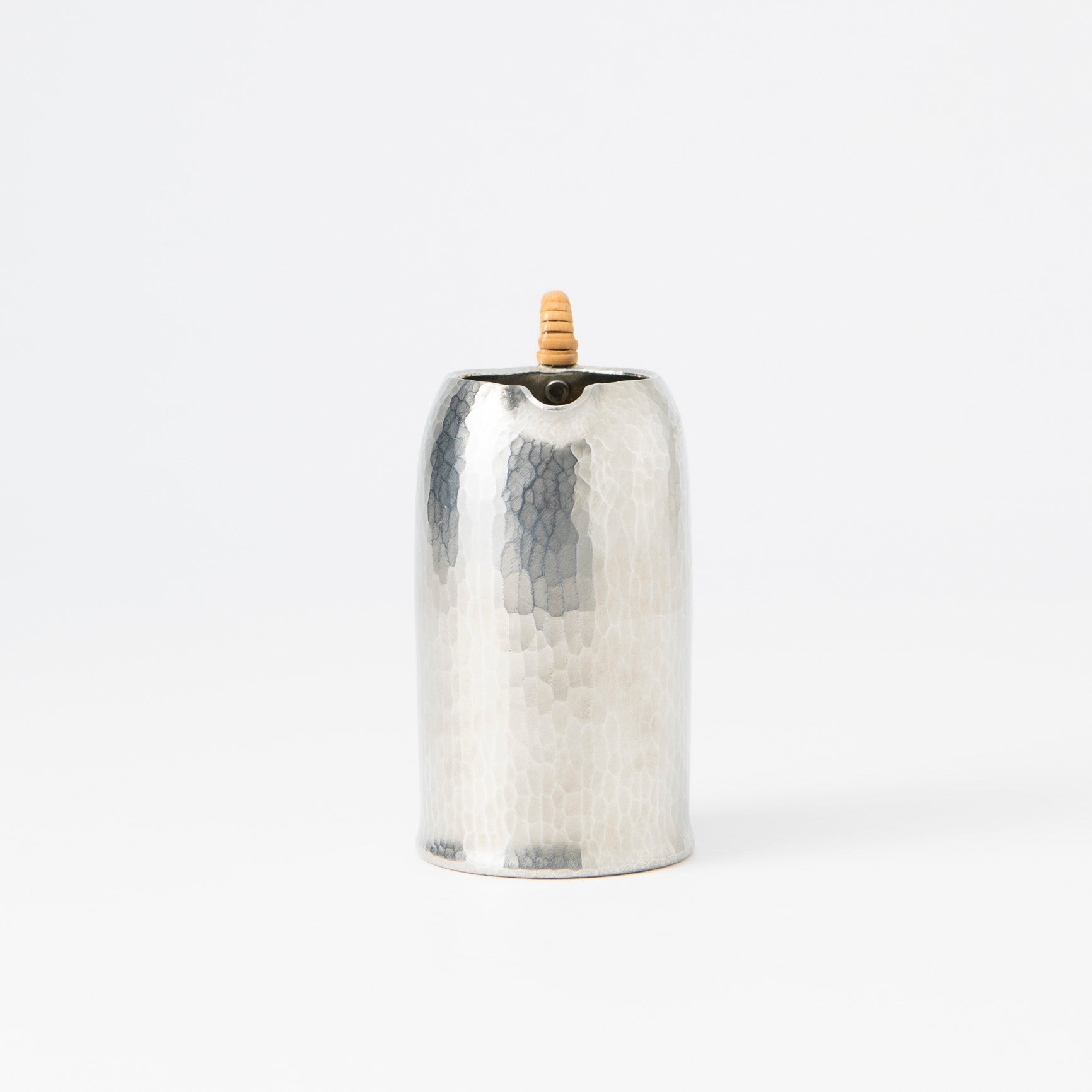
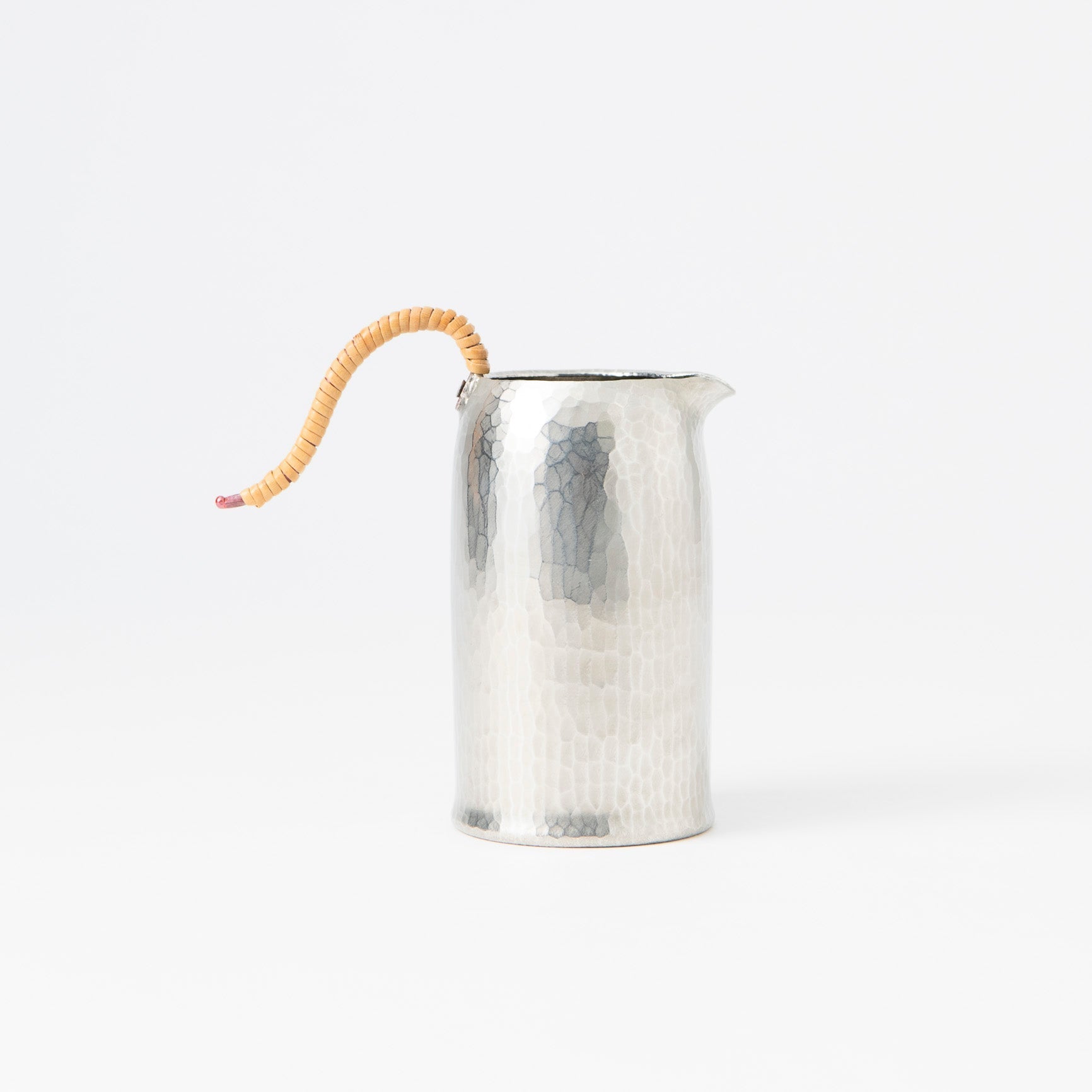
Hammered Tin Chirori Sake Carafe
Estimated Shipping Widget will be displayed here!
This tin sake carafe is made by Seigado, a renowned manufacturer which has a workshop in Niigata Prefecture. The company mainly produces sake carafes and cups with a form that fits comfortably in the hand and a luster and strength that can only be achieved by forging and beating repeatedly.
A pure tin sake carafe mellows and brings out the flavor of sake. A single plate of pure tin is hammered into shape. It is characterized by its practicality and beautiful hammered surface, and has a soft atmosphere despite being made of metal.
Tin was prized as a material suitable for storing water and other things because of its ability to purify what is put inside it. It is also suitable for enjoying the taste of alcohol itself since it does not retain any odor.
It is suitable for heating sake by dipping it in a pot filled with hot water. The good thermal conductivity of the metal allows it to warm up quickly, and it also makes cold sake look cool and refreshing. Please be careful when holding the handle after warming it up.
DETAILS
| Quantity | 1 |
| Size | D 6.5 cm (2.6 in) x H 13 cm (5.1 in) |
| Capacity | 280 ml (9.5 fl oz) |
| Material | Tin |
| Microwave | No |
| Dishwasher | No |
Maker / Brand
Seigado is a tsuiki workshop based at the foot of Mt. Yahiko in Niigata Prefecture, where this copper-hammering tradition took root centuries ago. Working from a single sheet of metal, their artisans develop each vessel through patient, rhythmic strikes, creating seamless forms that feel both precise and alive.
Family-run, the studio’s craftspeople are members of the Nishikata family. Now in its third generation, Seigado is known for masterful techniques and for pursuing original copper hues, such as their signature indigo blue tones. Beyond skill, what stands out is the conviction behind every piece.
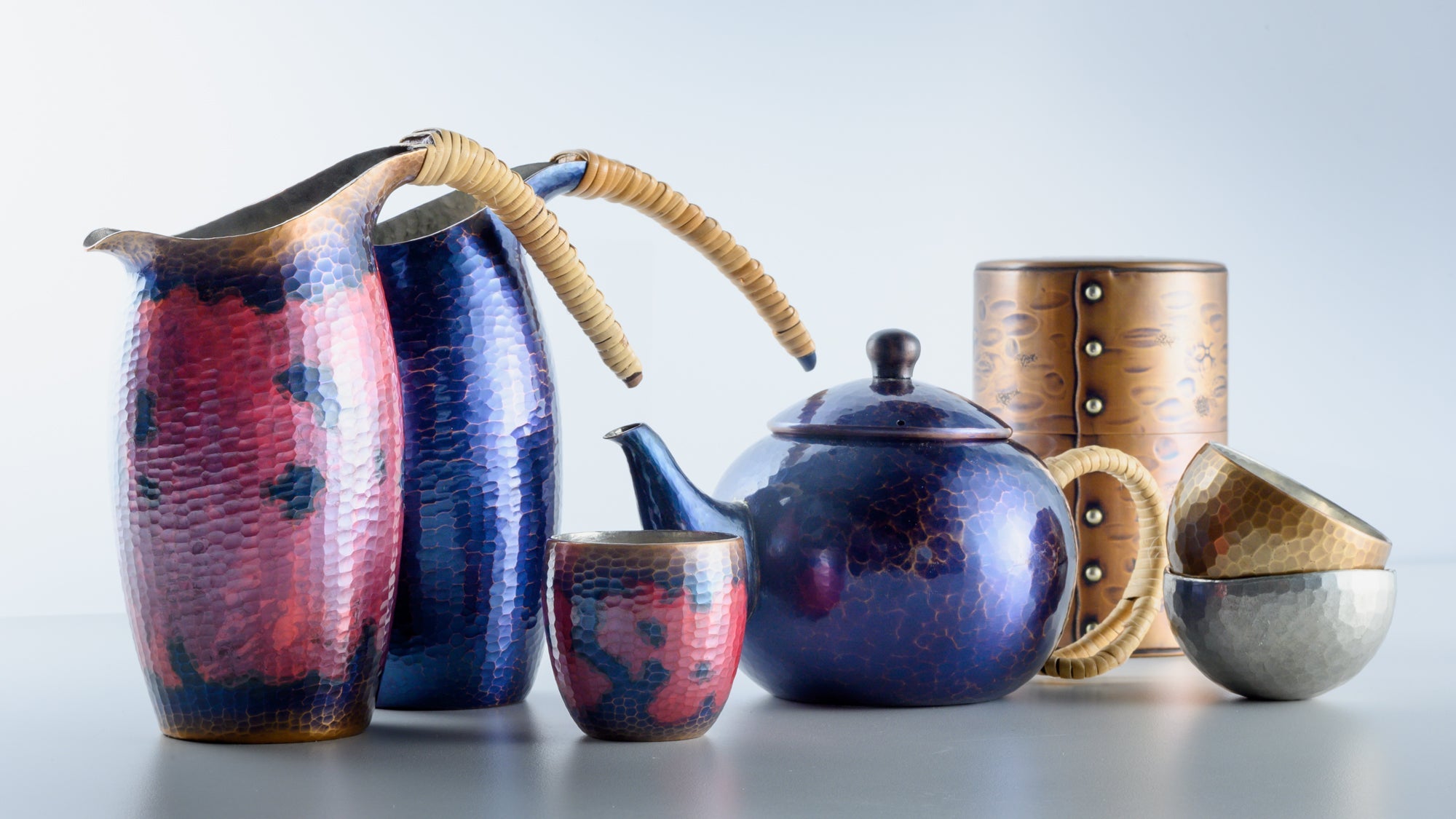
Crafts
Celebrate the timeless beauty of Japanese metalwork with our collection featuring hammered copper, Nambu ironware, and cast iron pieces. Each item showcases refined craftsmanship and a rich cultural heritage, perfect for adding character and depth to your table. Discover pieces that blend function with artistry in every detail.
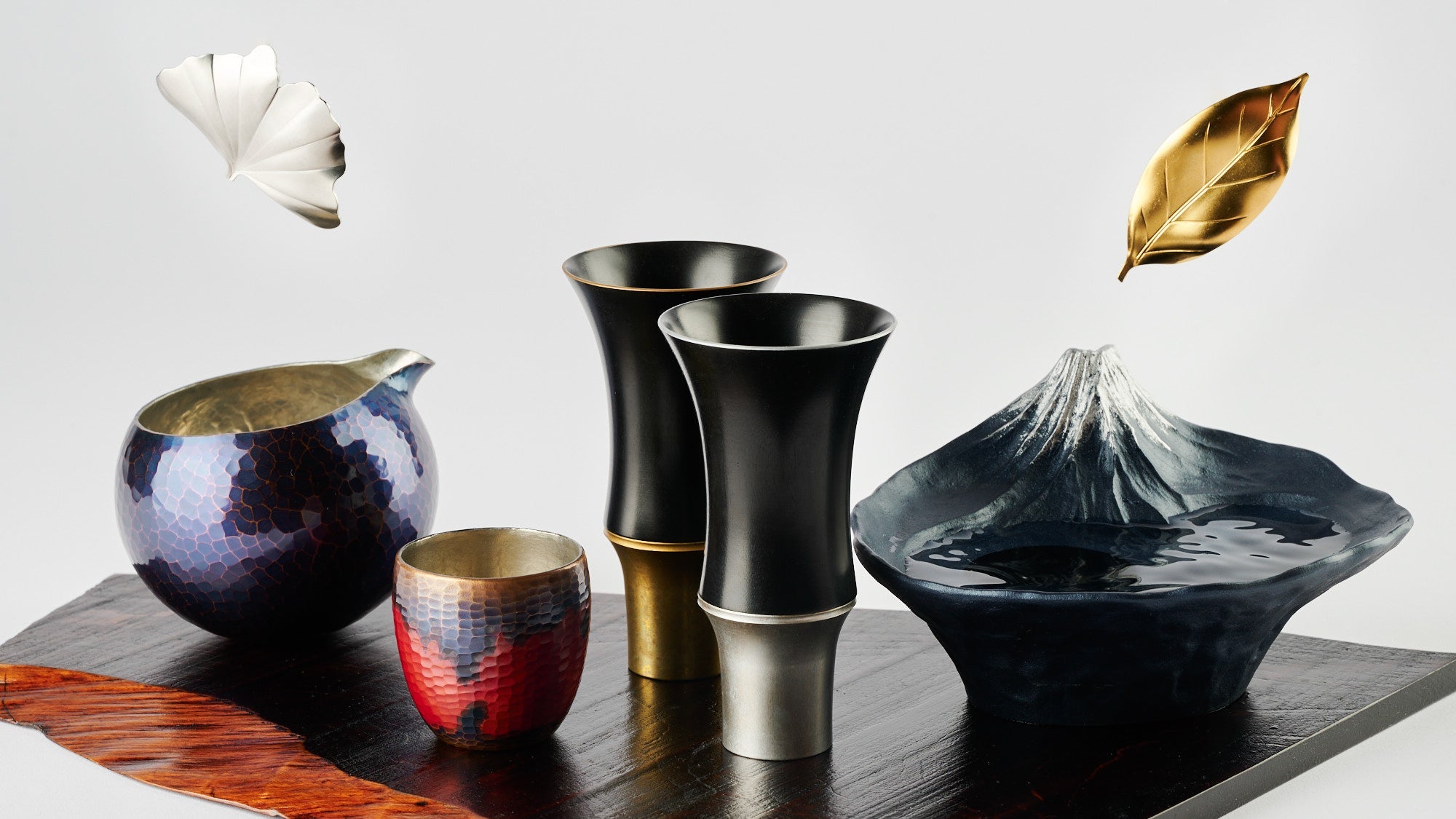
Choose options






















Estimated Shipping Widget will be displayed here!
Sake Carafes
We have collected wonderful sake carafes (sake bottles) from all over Japan that will enrich your blissful moments of savoring your favorite sake. Our collection includes a variety of traditional styles such as tokkuri, katakuchi, and chirori, each with its own unique charm and function.
The standard size of a sake carafe is 180–360 ml (6–12 fl oz). For those who prefer to drink in larger quantities or often share with groups of more than two, we recommend choosing a larger size.
Explore our exquisite range of sake carafes, crafted from a variety of materials, including elegant metalware and inviting stoneware. Pair your preferred sake carafe with sake cups of your choice to create your very own sake set and elevate your drinking experience to new heights.
